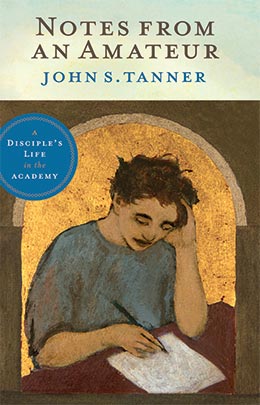Carrots, Vision, and Learning Outcomes at BYU
John S. Tanner, Notes from an Ameteur: A Disciple’s Life in the Academy (Provo, UT: Religious Studies Center; Salt Lake City: Deseret Book, 2011), 48–9.
My five-year-old granddaughter Jane has to be encouraged to eat her vegetables. When she lived with us this summer, we often said, “Now eat your carrots, Jane; they will give you good night vision.” Her mother later heard Jane piously proffering the same advice to her little brother: “Eat your carrots, John; they will give you good night vision.” When her mother heard this she said, “That’s right. Jane, do you know what ‘vision’ is?” “Of course I do, Mom,” Jane said: “dreams from God.”
Wouldn’t it be great if we could obtain the vision we need simply by eating carrots! For we depend on vision—in our personal lives, in the Church, and at BYU. As I have often said, BYU is built on dreams as much or more as on bricks and mortar. It exists first and foremost as an idea and ideal toward which we are striving. The Prophet Joseph envisioned a Mormon university that would become “one of the great lights of the world.” [1]
Brigham Young and Karl G. Maeser dreamed of a school where even the alphabet and times tables would be taught with the Spirit of God. [2] Alfred Kelly saw a vision of the campus with thousands of students thronging through temples of learning in the early morning light. [3] BYU still exists as an idea and an ideal in the hearts of those who work and study here, as well as all those who guide, support, and love BYU.
Just over a decade ago, I was asked to articulate our collective dreams for what we expected students to gain from their BYU education. The result was “The Aims of a BYU Education.” This statement sought to summarize the prophetic direction given to the University over the years and to extend the visionary mission statement developed during the Holland administration.
Now, ten years later, every department has been asked to articulate the learning outcomes it envisions for students who complete each degree program. These outcomes communicate in clear and simple ways what we expect our students to be able to do as a result of their particular program of study.
To jump-start this task, the program goals that you developed last year for accreditation have been put on a website entitled learningoutcomes.byu.edu. I invite each of you to go to this site and review the outcomes for your respective programs.
For some, these outcomes will be very familiar: you have communicated them to students for years, have measured student performances against them, and have used this information to improve your programs. For others, your program goals will be unfamiliar and may still need to be more carefully defined and then translated into learning outcomes. A helpful document to assist in this task has been prepared by David Whetten of the Faculty Center; it is attached to this memo. Ideally, learning outcomes are clear, simple, and few.
Now is the time to ensure that we have in place a clear vision of our learning outcomes for each degree program. Soon—and I suggest sooner rather than later—we need to share these learning outcomes with our students so that, to paraphrase Thoreau, each student can “advance confidently in the direction of his [or her] dreams.” [4] This will require clarity of vision. So let’s eat our carrots.
Notes
[1] History of the Church of Jesus Christ of Latter-day Saints, ed. B. H. Roberts (Salt Lake City: The Church of Jesus Christ of Latter-day Saints, 1932–51), 4:269.
[2] Karl G. Maeser, “History of the Academy,” in Educating Zion, ed. John W. Welch and Don E. Norton (Provo, UT: BYU Studies, 1996), 2.
[3] B. F. Larsen, “Fifty Years Ago,” speech given at Brigham Young University alumni meeting, May 25, 1962, B. F. Larsen biographical file, BYU Archives, 4; see also Ernest L. Wilkinson and W. Cleon Skousen, Brigham Young University: A School of Destiny (Provo, UT: Brigham Young University Press, 1976), 873–74.
[4] Henry David Theoreau, “Conclusion,” in Walden and Other Writings, ed. Brooks Atkinson (New York: Random House, 1950), 289.
